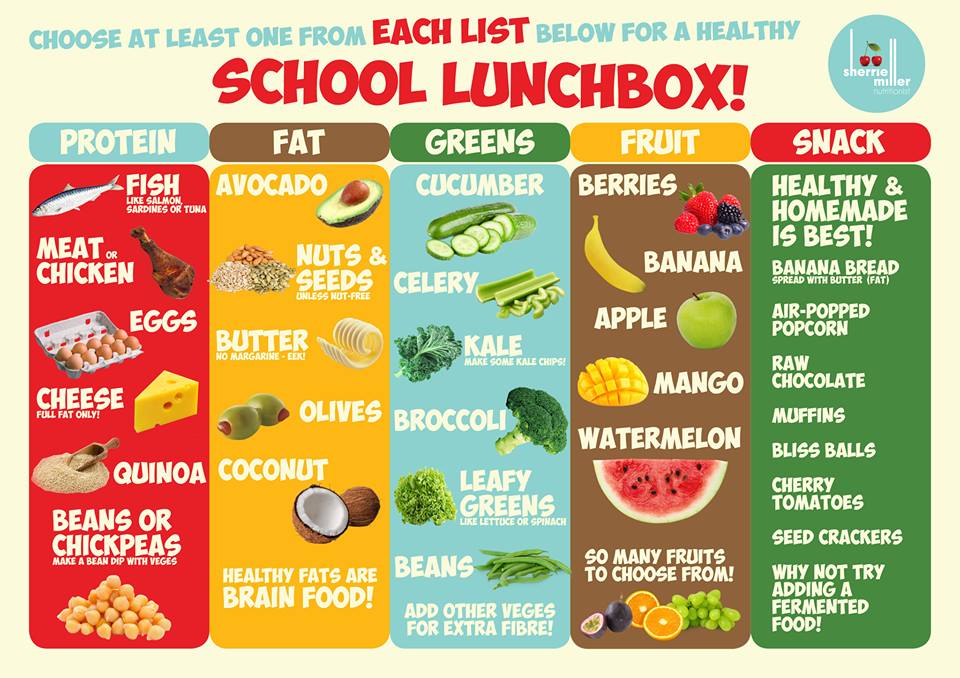By Sherrie Miller
The summer holidays have come and gone, and we’re now back into routine, embracing the 2019 school year. I hear many Mum’s say at the beginning of each school holidays, “I’m so glad I don’t have to do lunchboxes for the next few weeks!” It is clear that lunchboxes can be a real headache for some from dealing with fussy kids to trying hard to keep it healthy.
A nude food lunchbox is the best option. Not just for reducing plastic waste, but the more nude, the more likely it’s a whole food. If your child is a picky eater or time is not on your side, we tend to get quite frustrated with lunchboxes, and many end up opting for convenience food, which is not nutritionally ideal for our little growing humans.
What makes a healthy lunchbox? What foods should we consider?
Protein and Good Fats
Two incredibly important nutrients that should be considered when building a healthy lunchbox is protein and fat. Many kids’ lunchboxes lack these two nutrients. Protein is important for muscle strength and growth and fat is essential for brain function. Both protein and fat also keep us feeling full for longer.
Fruit and Vegetables
Fruit and vegetables are not only rich in antioxidants, vitamins and minerals, but also fibre. Fibre is needed to keep our bowel movements healthy but also keep our gut bugs happy – the good bacteria – that play many important roles in our body such as reducing inflammation, regulating immunity, nutrient absorption and improving mental health. Fibre also slows down blood sugar spikes, reducing the rollercoaster ride of sugar highs and lows.
Homemade Sweet Treats
Sweet treats are magical moments in life, and there are many ways in which you can add a sweet treat to your child’s lunchbox that have a much healthier impact than the highly processed kind.
Too much sugar is detrimental to your health and it’s so important for people to acknowledge this and make changes. The World Health Organisation (WHO) recommends that children have no more than 3 teaspoons of added sugar a day in their daily diet. Many kids eat up to 40 teaspoons of sugar a day, as they’re hidden in processed foods.
Some sugars may be naturally occurring such as fruit, grains or lactose but much of it will be added sugar. Looking at the ingredients list will help you determine this. If sugar is listed in the first 3 ingredients or there is more than one type of sugar listed (corn syrup, dextrose, glucose, cane sugar, fruit juice concentrate etc), it is likely to be high in added sugar.
Making homemade sweet treats using whole ingredients and sweetening with natural fruit or honey, is a nice way to add some sweetness to your child’s lunchbox. Fruit is naturally sweet, and if you can get your child to satisfy their sweet tooth with just fruit alone, you’re on a good path. It is recommended that we eat no more than two pieces of fruit a day.
Processed Carbs and Additives
The other problem with many school lunchbox snacks lining the supermarket shelves, is that they are highly processed offering no nutritional value, often cooked in inflammatory seed oils and laden with artificial additives that contribute to behavioural problems, asthma, skin irritations and other health problems. Learn to recognise the numbers on the back of packaged foods and their associated symptoms. There are now many phone apps that can help you with this.
Adding Greens
This is not always an easy feat for many parents, because in most kids’ eyes, green is bad! Encouraging kids to eat their greens has obvious reasons. It reduces inflammation, is rich in minerals such as iron and calcium and boosts immunity to help fight off colds and infections. I know this options is a battle for many, but don’t give up on feeding the greens.
Think Outside the Lunchbox
As we move towards the cooler months, why not consider sending your child to school with a warm lunch in an insulated food jar. There are so many cute and colourful food jars available today and you can fill it with a yummy, nourishing meal. Depending on your child’s level of fussiness, some ideas may include: leftover dinner from the night before, casseroles, fried rice, soup, healing chicken bone broth (add some spelt noodles for a chicken noodle soup) or porridge. Stir some unflavoured collagen powder into the porridge for added protein, some macadamia oil for added fat and top with berries, hemp seeds and a drizzle of raw honey.
What does a Healthy Lunchbox Look Like?
- Protein (chicken drumstick, tuna, eggs, cheese, chickpeas or red kidney beans to make as a dip)
- Fat (butter, eggs, cheese, coconut, olives, seeds)
- Greens (kale chips, celery, cucumber, beans, snow peas, broccoli)
- Vegies (sweet potato, lettuce, carrot, capsicum, cauliflower – eat them with the dip)
- Fresh Fruit (berries, cherry tomatoes, mango, banana, apple, plums, peaches)
- Homemade Sweets (gelatin gummies, muffins, banana bread, bliss balls, fruit jelly, biscuits)
And don’t forget water.
Allow your child to feel like they have control of their lunchbox destiny! Get a Healthy Lunchbox chart emailed to you and have your child choose something from each list on the chart.
Simply email sherriemillernutrition@gmail.com and your free healthy lunchbox chart will be emailed to you.
Sherrie Miller is a qualified Nutritionist with a special interest in gut health. She is passionate about the way in which our digestive health can influence our mental health, skin health and immunity. Sherrie takes the concept of ‘Food is Medicine’ very seriously. You can find out more on instagram @sherriemillernutrition


